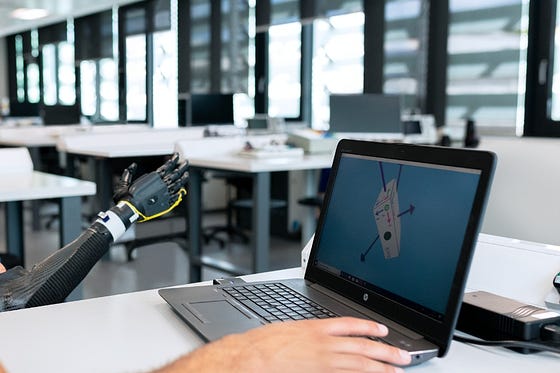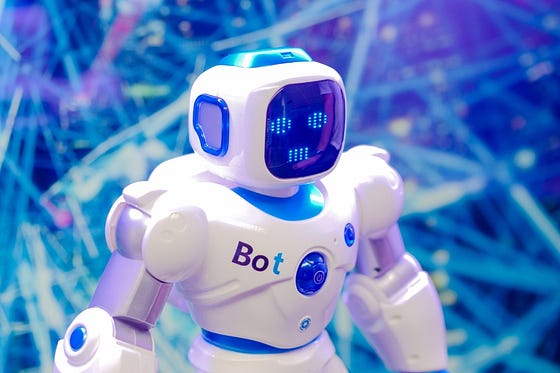
Robotic engineering applications have become a cornerstone of technological innovation, influencing various aspects of our daily lives and industries. Robotic engineering designs, creates, and applies robots for various purposes with a broad impact.
In industries, robots are extensively used for tasks that are repetitive, dangerous, or require precision. Robotic arms, equipped with advanced sensors and control systems, are employed in manufacturing processes to assemble products with high accuracy and efficiency. This application not only streamlines production but also enhances overall product quality.
The healthcare sector has seen significant advancements through robotic engineering. Surgical robots, controlled by skilled surgeons, enable minimally invasive procedures, reducing patient recovery time and improving surgical precision. Robotic exoskeletons aid in rehabilitation, helping individuals regain mobility and strength after injuries or surgeries.
Robots play a crucial role in exploration and research. Unmanned aerial vehicles (UAVs) or drones, a form of robotic technology, are utilized for tasks such as surveying landscapes, monitoring wildlife, and even delivering goods. In space exploration, robots like rovers are designed to explore distant planets, collecting data and conducting experiments in environments that are challenging for humans.
The agricultural sector has witnessed the integration of robotic engineering for more efficient and precise farming. Agricultural robots, equipped with sensors and imaging technology, can perform tasks such as planting, harvesting, and monitoring crop health. This not only increases productivity but also minimizes the environmental impact of farming practices.
Robotic engineering has made significant strides in enhancing our daily lives. From robotic vacuum cleaners that autonomously clean homes to smart assistants that respond to voice commands, these applications showcase the convenience and efficiency that robots bring to our everyday routines.
The field of robotic engineering continues to evolve, with ongoing research and development pushing the boundaries of what robots can achieve. The integration of artificial intelligence (AI) and machine learning further enhances the capabilities of robots, allowing them to adapt, learn, and perform more complex tasks.
In conclusion, robotic engineering applications have become integral to modern society, impacting industries, healthcare, exploration, agriculture, and our daily lives. As technology continues to advance, the potential for robots to contribute to efficiency, precision, and safety across various domains is boundless, making robotic engineering a dynamic and impactful field of innovation.

Robot technology, once a fantastical notion confined to the realms of science fiction, has rapidly transitioned into an integral component of our everyday reality, profoundly impacting the way we live and work. This narrative travers the intriguing trajectory of robot technology, encompassing its origins, transformative milestones, and the pervasive influence it exerts across diverse industries.
The concept of robots finds its roots in ancient automata, reflecting humanity’s age-old fascination with replicating artificial life. However, it was not until the 1920 play “R.U.R.” that the term “robot” was officially coined, marking a conceptual genesis for humanoid machines designed to execute various tasks. This pivotal moment laid the conceptual groundwork for subsequent explorations into mechanized entities.
The industrial revolution witnessed a paradigm shift with the assimilation of robots into manufacturing processes, notably through the introduction of robotic arms on assembly lines. This epochal development revolutionized efficiency and precision, setting the stage for the burgeoning field of industrial automation that followed.
Technological progress propelled robots beyond their initial confines of repetitive tasks. The incorporation of sensors, artificial intelligence (AI), and machine learning endowed robots with the ability to engage in sophisticated activities such as decision-making, learning, and adapting to dynamic environments. This evolution broadened the scope of robotic applications across industries, from intricate surgical procedures to the optimization of logistics through AI-driven algorithms.
The synergy between artificial intelligence and robotics has been a game-changer, unlocking new dimensions of capability and adaptability. Machine learning algorithms enable robots to analyze vast amounts of data, make informed decisions, and continually enhance their performance. This convergence has resulted in a spectrum of applications, ranging from medical advancements to the optimization of complex logistical operations.
Intriguingly, robot technology has transcended the confines of industrial applications and has seamlessly integrated into our daily lives. From robotic vacuum cleaners simplifying household chores to smart home assistants streamlining daily routines, robots have become familiar companions, enhancing convenience and offering innovative solutions to contemporary challenges.
As we look toward the future, the trajectory of robot technology promises boundless possibilities. Collaborative robots, designed to work alongside humans (cobots), are poised to redefine workplace dynamics, fostering safer and more efficient environments. Moreover, advancements in space exploration robotics and innovations in soft robotics and bio-inspired designs anticipate a new era of versatile and adaptable robots.
The evolution of robot technology signifies a remarkable convergence of imagination and technical prowess. From the conceptualization of humanoid machines in early literature to their practical integration into various industries and daily life, robots stand as a testament to human ingenuity. The ongoing collaboration between humans and robots is poised to shape the contours of progress, unveiling unforeseen opportunities and advancements in the dynamic landscape of technological innovation.

Artificial Intelligence (AI) has completely changed the game for robot technology, taking it from the realm of science fiction to an essential part of our daily lives. This shift is a fascinating journey, influencing how robots are made, what they can do, and how they impact various industries.
The concept of robots isn’t new, going back to ancient times with automata. However, the real game-changer was integrating AI into robots. This meant they could analyze information, make decisions, and constantly improve their performance. It was a significant shift that allowed robots to do more complex tasks.
In the industrial world, the marriage of AI and robots became evident, especially with the introduction of robotic arms on assembly lines. AI-driven algorithms optimized efficiency and precision, showing that intelligent machines could transform industries. This collaboration opened doors for robots to handle intricate tasks, setting the stage for a future where they seamlessly integrate into different fields.
As technology progressed, robots evolved beyond simple, repetitive tasks. They started using sensors, machine learning, and AI to make decisions, learn from experience, and adapt to different environments. This evolution expanded the range of tasks robots could perform across various industries, showcasing the transformative potential of intelligent machines.
The impact of AI on robot technology extends beyond industries. In healthcare, AI-powered robots assist in complex surgeries, changing the way we approach medical procedures. Logistics operations benefit from AI-driven algorithms, making processes more efficient and cost-effective. This influence reaches into our daily lives, from robotic vacuum cleaners making household chores easier to smart home assistants streamlining our routines.
Looking ahead, the future promises even more possibilities as AI continues to advance. Collaborative robots designed to work alongside humans (cobots) are reshaping workplaces, making them safer and more efficient. Advancements in space exploration robotics, coupled with innovations in soft robotics and bio-inspired designs, indicate a new era for versatile and adaptable robots.
In conclusion, the impact of Artificial Intelligence on robot technology is a story of transformation, turning once-dreamed concepts into practical, everyday realities. It’s a testament to the dynamic interplay between human creativity and technological progress, and as AI continues to evolve, the collaboration between humans and robots is set to unfold new opportunities in the ever-changing landscape of technological innovation.